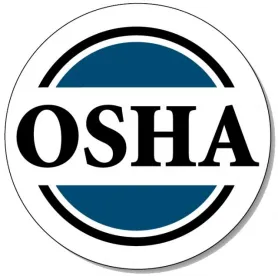On Friday, December 22, 2017, the U.S. Court of Appeals for the District of Columbia Circuit rejected all of American industry’s many challenges to the Occupational Safety and Health Administration’s (OSHA) new silica dust standard, 29 C.F.R. §§ 1910.1053 and 1926.1153—one of the key achievements of OSHA under the Obama administration. The court remanded the standard for OSHA to further explain or reconsider why it did not adopt medical removal protection.
As previously discussed, OSHA’s new silica standards lower the permissible exposure to 50 micrograms per cubic meter (μg/m3) for all covered industries; this is down from 100 μg/m3in general industry and 250 μg/m3 in the construction industry. The standard is a modern health standard, with requirements for air monitoring, regulated areas, engineering and work practice controls, respiratory protection, housekeeping, medical surveillance, and hazard communication. It does not, however, require medical removal protection for employees whose doctors recommend removal from silica exposure.
Industry challenged the standard on a broad front, arguing, among other things, that OSHA’s key findings—that there was a significant risk of silica disease at 50 μg/m3; that the standard was technologically feasible; and that it was economically feasible— were unsupported by substantial evidence. As to feasibility, the challenge particularly focused on three sectors—foundries, hydraulic fracturing and construction.
The court’s decision was not entirely unexpected, for its skepticism toward industry’s arguments became obvious at the oral argument. Judges Tatel and Garland started picking apart industry arguments within the first three minutes. For example, when an industry lawyer attacked OSHA's choice of studies by claiming "OSHA had a thumb on the scale," Judge Garland remarked that, "OSHA is supposed to have a thumb on the scale when it comes to worker safety"—that is, when both sides have competing studies, OSHA is allowed to pick the study that leads to better worker protection.
The Power of Being Merely “Reasonable”
As expected after the oral argument, the court rejected all industry’s challenges. This article will not go through the court’s reasoning on each one, for the court’s opinion kept striking the same note. Quoting from a previous decision, it stated as to one argument, “We have then, at worst, the ordinary situation of controverted evidence, in which we must defer to the reasonable and conscientious interpretations of the agency.” Over and over, the court emphasized that the evidence on health risk was in conflict, the science was uncertain but that OSHA’s decision was reasonable, and that no more was required. The decision used a form of the word “reasonable” 37 times. Over and over, the court emphasized its “highly deferential standard of review.”
This same approach characterized the court’s rejection of arguments that the standard was technologically or economically infeasible in certain industries. It stated (quoting a previous decision) that OSHA need prove only that, “a reasonable possibility that the typical firm will be able to develop and install engineering and work practice controls that can meet the [standard] in most of its operations.” (Emphasis by the court.) The opinion used the word “typical” 24 times.
There was one partial winner before the court, however. North America’s Building Trades Unions convinced the court that OSHA’s explanation for not requiring medical removal protection failed to pass muster. The court agreed and remanded that issue “for reconsideration or further explanation.”
A Seeming Impatience with Industry Arguments
The opinion, which was unsigned (“per curiam,” in legal jargon) seemed to betray an annoyed impatience at industry’s arguments, sometimes not so much rejecting them as swatting them away. For example, the court rejected industry’s challenge to OSHA’s finding of technological feasibility, finding that there was a “reasonable possibility that the new standard could be achieved by the typical employer in most operations.” Industry had argued that compliance in foundries would not be technologically feasible because airborne silica levels are so variable that, to comply with the permissible exposure limit (PEL), employers would have to keep exposures “well below” it, and OSHA did not find that that lower level was feasible.
Part of the court’s answer to the variability argument seemed to be unusually credulous, taking OSHA at its word that its flexible enforcement would be so reasonable in practice as to alleviate the variability problem. For example, the court stressed that its standard of review “does not require compliance from all firms in all operations all of the time” and that “OSHA expressly contemplates flexible enforcement to accommodate unexpected swings in exposure levels.” This is unrealistic. Try convincing an OSHA inspector that compliance is not required “all of the time.” He or she won’t know what you are talking about. And note the key word “unexpected.” How many OSHA industrial hygienists are going to be convinced that an upswing is unexpected? They’ll probably tell an employer that, “your sampling history shows” or “your employees tell us” that “you often get these upswings when you” perform a certain task.
A Possible Remaining Argument
The industry brief did not appear to ask the court to declare invalid OSHA’s placement of the burden of proving infeasibility on employers performing certain operations as to which feasibility was uncertain or unproven. The standard as issued (unlike several of the early industrial hygiene standards) places the burden of persuasion on the employer to show the infeasibility of compliance. Thus, § 1910.1053(f)(1) requires use of engineering and work practice controls to reduce exposure to the PEL “unless the employer can demonstrate that such controls are not feasible.” (Emphasis added.) Industry might well have argued that with respect to certain operations as to which the record does not show feasibility, the burden of persuasion as to feasibility during enforcement—i.e., when a citation is litigated—should be on OSHA.
This might have been particularly useful for the hydraulic fracturing industry, as to which the court appeared to concede industry’s argument that “there is no evidence of any controls reducing exposure below the new PEL” but held that OSHA could adopt a “technology-forcing” standard. The argument also might have been particularly useful for the construction industry with respect to four tasks the feasibility of which the court seemed unsure: “hole drillers using handheld or stand-mounted drills, jackhammering and using other powered handheld chipping tools, masonry cutters using stationary saws, and mobile crushing machine operators and tenders.”
An employer that was not a member of the trade associations that challenged the standard should be able to make this partial invalidity argument before the Occupational Safety and Health Review Commission if it is prosecuted by OSHA.
What Now?
The silica standard was adopted by Obama’s OSHA. Trump’s OSHA might see the standard differently. Ironically, the Achilles’ heel of the standard may be the very thing that got it past industry’s invalidity challenges—that on matters of great uncertainty, OSHA must be upheld if it is merely reasonable. Uncertainty and reasonableness are two-sided coins. Trump administration appointees might point to the wide uncertainties surrounding the standard and the breadth of judicial deference to justify re-opening the standard and re-examining some of its more questionable assumptions. It might overturn some of its important features. It might raise the PEL. It might propose that, in certain industries or applications, the presumption of feasibility in enforcement be reversed and that as to them, OSHA might have to show feasibility as applied.
It is, however, very uncertain whether Trump’s OSHA would want to do this—whether its new appointees would be willing to take the political heat that would be applied to them if they were to re-open what their opponents and the press will portray as a hard-won victory.





 />i
/>i

